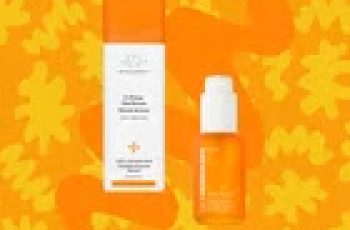What Is Astringent And How Does It Differ From Toner
Are you finding that your moisturiser doesn’t seem to absorb as quickly as it once did? Finding your skin is looking or feeling as though it’s missing something, but can’t put your finger on it. Astringent may be the answer you’ve been looking for, here we explore a little more about this skin-changing product.
What is astringent?
Astringent is a liquid-based formula, usually containing rubbing alcohol (isopropyl) used by more oily skin types to help cleanse the skin, tighten pores and dry out any excess sebum that can cause blemishes. Using an astringent after cleansing will clear the skin and prepare it for moisturisation meaning it can be quite a valuable step in your everyday skincare routine. The name itself derives from the Latin adstringere, meaning “to bind fast” which gives you the idea of how quickly you can expect the product to work. It comes in many different formulations with added ingredients that can help various skin concerns from redness, spots and even dull complexions.
For you in the know, this product may be sounding very similar to using a toner, though astringents are used in the same way there are a number of differences between the two, we will be discussing those further!
What are the benefits of using an astringent?
There are many benefits astringents have for the skin, such as:
Astringents tighten the skin
Astringents reduce inflammation
Astringents reduce blemish breakouts, such as spots and blackheads
Astringents cleanse irritants from the skin
Astringents shrink the appearance of enlarged pores
Astringents provide anti-bacterial benefits
Astringents unclogs pores
Astringents remove excess oil (sebum)
Oily and blemish-prone skin is the skin type that will benefit most from using astringents, but that doesn’t mean if you have normal or dry skin you should bypass this product as the variety available is impressive and finding an astringent or toner is easier than you think. With natural astringents, such as witch hazel and lemon, you can find the best formula that helps clear your skin of any remaining makeup product or debris leftover from your day.
How to use astringent
Astringents are the next step after cleansing and before any serums or moisturisers. Many astringents contain chemical exfoliants such as salicylic acid and citric acid which penetrate into the deeper layers of your skin unclogging the pores from any bacteria and shifting away any products or makeup that your cleanser may have missed.
Step One- Cleanse
Whichever cleanser you decide to use this must always be the first step to your routine to ensure your skin is as clean as it can be. A cleanser is able to remove parts of makeup and other products. It can also dislodge any dead skin cells that can build up on the skin and develop into dry patches, blemishes and blackheads.
Step Two- Astringent or Toner
Soak cotton pads in the liquid of your chose, next sweep it across the skin avoiding the eyes and mouth. If you take a look after doing this you will be shocked to see the pads look grey, this is, in fact, dead skin cells your astringent has lifted away from the skin with the help of the chemical exfoliate leaving your skin glowing.
Top Tip: If you find the cotton pad has a lot of makeup on it then it is best to reconsider your makeup remover or cleanser to something more effective. Milk or lotion formulas of makeup removers used with a damp flannel make light work of foundation in comparison to makeup wipes. Remember it is always best to remove your makeup before cleansing the skin, by not doing this is the equivalent to taking a shower with your clothes on.
Step Three- Serums or Moisturisers
You will now find in this final step the products are able to work quickly and you see results a lot sooner than before. This is due to the fact the products are able to absorb faster into the layers of the skin and begin work targeting the areas that are in need of help, be it anti-ageing or blemish-fighting.
Using an astringent should leave your skin feeling squeaky clean with a very slight tingle if you find it stings or makes your skin feel uncomfortable and tight than the product is too strong and you should opt to try a toner instead as their formulas are more gentle.
What’s the difference between astringent and toner?
In all honesty there is only a handful of difference between an astringent and toner, they certainly look the same and perform similar jobs, however the main difference is how they benefit the skin types. Whilst oily and blemish-prone skin really benefit from using astringent, dry skin types cope better with toners as they are not as harsh or drying.
The use of ingredients in astringents and toners vary which will help explain how they treat the skin differently:
Ingredients Commonly Found in Toners
Lactic acid
Glycolic acid
Hyaluronic acid
Salicylic acid
Rose water
Witch hazel
You will find the chemical exfoliants found in toners, such as lactic and hyaluronic acids, work on the outer layer of the skin meaning they are more gentle and lock in moisture allowing the skin to become more hydrated. Using a toner if you have dry skin will help you add some luminosity and brighten the complexion.
Ingredients Commonly Found in Astringents
Alcohol
Witch hazel
Citric acid
Salicylic acid
Salicylic acid is a BHA that can reach further down the skin, great for battling breakouts but can be harsh on certain skin types. If your skin is consistently oily or greasy and you find 3 or more active blemishes on your face than astringent should be the next steps you take. It is always best to talk to a dermatologist if you are unsure of using either a toner or astringent, they are the professionals who will tell you which ingredients and products are safe for your use at home. You can find high-quality products available over the counter at your local pharmacies and department stores.
What are the side effects of using astringent?
Astringents are the heavyweights of over the counter skincare, they can be very drying to the skin and should only be used if you are certain they are the right product for you.
Oily skin types will find they get the best results. To avoid any irritation, redness or peeling than use the astringent topically on the oiliest areas, such as your T-zone, or any with spots or blemishes. If your skin is dry or you have skin conditions such as rosacea or eczema it is best to avoid using astringents all together.
No matter your skin type you must always follow your astringent or toner with a high factor of SPF to stop any UV damage.
So, astringents and toners are indeed very similar but cater to the different skin types out there. Whether you are oily, dry or normal including an astringent of some sort into your skincare routine will no doubt be the best thing you can do. By doing so you are able to give your skin the deepest clean and removing the layer that can prevent serums and moisturisers that are packed with active ingredients ready to target fine lines, wrinkles, uneven skin tone and many more from working. All pretty remarkable for such an understated bottle of magic!
Are you wondering what exactly is chemical exfoliation and how it can affect your skin? Find out more over on our guide on how chemical exfoliation works to perfect your skin.


